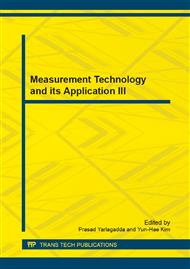p.340
p.344
p.349
p.355
p.359
p.363
p.370
p.374
p.380
Development of Stimulator Based on Audio-Visual Feedback Signal
Abstract:
To improve the muscle function handicap and enhance the body movement function of the stroke patients, a new medical instrument, based on audio-visual feedback, is developed. The designed stimulator regards sound (voice) and light signal (flash lamp) as the command signals. With remind of both voice and visualization signal, trainers can take the initiative to participate in training and try their best to generate a weak electromyographic signal. It provides a new treatment platform for stroke patients, which can play a positive role in the rebuilding of cerebral nerve net, the rehabilitation of body movement function diseases, the protection of brain function and psychological rehabilitation. The real-time monitoring and regulating function for the stimulating current was innovatively achieved. With the above functions, it’s easy for doctors to set up different stimulating intensities for different patients. This stimulator also has advantages of safer noninvasive, easy to carry and advanced human-computer interaction function, all of these make contributions to building up the muscle strength and the rehabilitation of body movement.
Info:
Periodical:
Pages:
359-362
Citation:
Online since:
June 2014
Authors:
Keywords:
Price:
Сopyright:
© 2014 Trans Tech Publications Ltd. All Rights Reserved
Share:
Citation:


